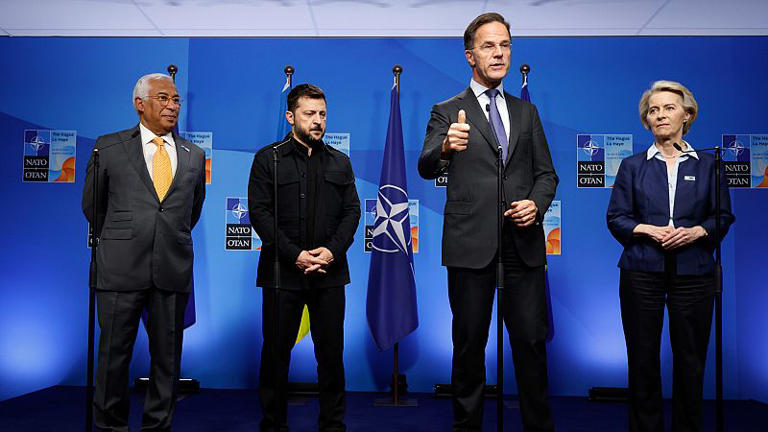New NATO Strategy
Change in NATO Secretary Marks Strategic Shift at Alliance Summit
The recent change in NATO Secretary has cast a defining tone over this year’s NATO summit, as leaders from all 32 member countries convened in The Hague. New NATO Secretary General Mark Rutte opened the meeting by reaffirming that Russia remains “the most significant and direct threat” to the alliance’s security. However, his leadership also signals a notable shift in strategic priorities, moving away from previous years’ central focus on Ukraine.
Strategic Focus Shifts Under New NATO Secretary
The change in NATO Secretary has coincided with a redirection of the summit’s core agenda. This year, the emphasis lies heavily on defense spending, with a new push for member states to commit at least 5% of GDP to military budgets. Dutch Defence Minister Ruben Brekelmans highlighted this shift: “The position of the United States has changed, and that has shaped this summit’s trajectory.” He called the proposed spending benchmark a “historic step” for the alliance under new leadership.
Ukraine Less Central in New Agenda
Ukrainian President Volodymyr Zelensky, a central figure at last year’s summit, plays a more limited role this time. While attending a state dinner hosted by the Dutch king and expected to meet with former U.S. President Donald Trump, Zelensky will not join the key North Atlantic Council session. This diminished presence marks a departure from last year’s summit, where Ukraine was offered strong verbal guarantees of future NATO membership.
NATO Unity Tested as Leadership Changes
The change in NATO Secretary comes amid rising tensions over continued support for Ukraine. In contrast to 2024’s pledges under President Biden, Trump-aligned sources indicate a retreat from such commitments. “Trump wanted that bridge dismantled from the outset,” said Jason Israel, a former U.S. National Security Council official, referring to prior NATO guarantees to Ukraine. “If I were Ukraine, I’d be deeply concerned.”
U.S.-Europe Divide Deepens
Experts point to a growing divide between the U.S. and Europe on the Ukraine issue. Former U.S. envoy Kurt Volker noted, “The U.S. no longer sees Ukrainian security as vital to Europe’s, but European nations do.” Under Rutte’s leadership, NATO faces the challenge of maintaining unity while navigating this divergence.
War in Eastern Ukraine Continues
Despite the change in NATO’s leadership and shifting summit priorities, the war in Ukraine rages on. Russia continues its push in areas like Sumy Oblast and the eastern front, although officials say Ukrainian forces are not at risk of encirclement. Russian daily casualties remain high, at around 1,100 troops per day.
Conclusion:
The change in NATO Secretary has brought both symbolic and substantive adjustments to the alliance’s direction. As Mark Rutte takes the helm, NATO must balance evolving geopolitical pressures, transatlantic divisions, and a war that shows no signs of resolution.



















